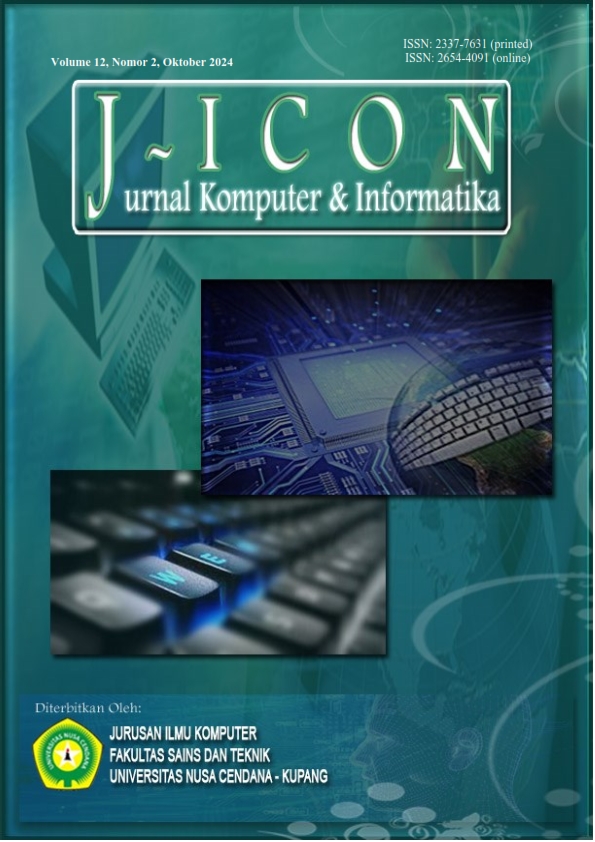MAPPING OF COBIT 5 DOMAIN GOVERNANCE IN THE IMPLEMENTATION OF LMS E-LEARNING ITB STIKOM BALI
Abstract
The implementation of e-Learning at ITB STIKOM Bali represents a significant support for online learning. The Learning Management System (LMS) called e-Learning ITB STIKOM Bali, based on Moodle LMS, is used to conduct lectures online. e-Learning is integrated with SINAK (Academic Information System), SID (Lecturer Information System), and SION (Online Information System) for both students and lecturers, including course registration and enrollment of students and lecturers. This system is used for both fully online lectures (Asynchronous Learning) and blended learning lectures in all study programs. However, proper maintenance and management of this system are necessary. Therefore, evaluation and analysis in IT governance related to the used LMS are required. In order to measure the maturity level of the e-Learning LMS implementation, measurement based on mapping and measuring the level of capability or gaps is needed. This measurement is conducted using the Process Assessment Model (PAM) within the COBIT 5 framework. Measurement activities will be based on several domains within COBIT 5, with process mapping based on business goals and institutional objectives. Based on the process mapping using PAM, domains strongly related to institutional IT goals focusing on customers and internal aspects are identified: MEA01 (Monitor and Evaluate Performance and Conformance), DSS 03 (Manage Security Services), APO13 (Manage Security), EDM 03 (Ensure Risk Optimization), BAI 07 (Manage Change Acceptance and Transitioning).
Downloads
References
ITB STIKOM Bali, “e-Learning ITB STIKOM Bali,”. [Online]. Available: https://elearning.stikom-bali.ac.id/.
S. De Haes, B. Peeters, B. Steve Reznik, and P. Llp, Information Systems AuditorTM (CISA ®), Certified Information Security Manager ® (CISM ®), and Certified in the Governance of Enterprise IT ® (CGEIT ®) designations. ISACA developed and continually updates the COBIT, ® Val ITTM and Risk IT frameworks, wh. 2008.
ISACA, COBIT ® Process Assessment Model (PAM): Using COBIT ® 5. 2013.
ISACA, COBIT 5 Implementation, Mr. Dong H. 2012. [Online]. Available: http://www.isaca.org/COBIT/Pages/COBIT-5-spanish.aspx
ISACA, Enabling Processes COBIT 5, Mr. Eka Sa. USA: ISACA, 2012. [Online]. Available: www.isaca.org/COBITuse
N. Made, R. M. Dewi, I. Made Candiasa, K. Yota, and E. Aryanto, “Pengukuran Tingkat Kapabilitas Tata Kelola SION menggunakan Framework COBIT 5 pada Institut Teknologi dan Bisnis STIKOM Bali”, doi: 10.30864/jsi.v15i2.365.
W. Hartanto, “Penggunaan E-Learning sebagai Media Pembelajaran,” Jurnal Pendidikan Ekonomi, vol. 10, no. 1, pp. 1–18, 2016. [Online]. Available: https://jurnal.unej.ac.id/index.php/jpe/ article/view/3438.
A. S. Ajiatmojo, “Penggunaan E-Learning Pada Proses Pembelajaran Daring,” TEACHING : Jurnal Inovasi Keguruan dan Ilmu Pendidikan, vol. 1, no. 3, pp. 229–235, 2021, doi: 10.51878/teaching.v1i3.525.
N. L. Ucu, S. D. E. Paturusi, and S. R. U. A. Sompie, “Analisa Pemanfaatan E-Learning Untuk Proses Pembelajaran,” Jurnal Teknik Informatika, vol. 13, no. 1, 2018, doi: 10.35793/jti.13.1.2018.20196.
D. Kartika and H. Kurnia, “Penerapan E-Learning Sebagai Media Pembelajaran Dalam Menghadapi Pamdemi Covid -19,” J-COSCIS: Journal of Computer Science Community Service, vol. 2, no. 1, pp. 15–24, 2022, doi: 10.31849/jcoscis.v2i1.7773.
ISACA, A Business Framework for the Governance and Management of Enterprise IT, Ian Firsti. United States of America: ISACA, 2012. [Online]. Available: www.isaca.org/COBITuse
I. P. Gede, A. Krissna, B. Eka, P. Pn, and A. A. K. O. Sudana, “Evaluation of IT Governance at Office X using the COBIT 5 Framework,” vol. 9, no. 1, pp. 1–12, 2021.
Copyright (c) 2024 Ni Made Rai Masita Dewi, Dian Pramana, I Gede Putra Mas Yusadara

This work is licensed under a Creative Commons Attribution 4.0 International License.
The author submitting the manuscript must understand and agree that if accepted for publication, authors retain copyright and grant the journal right of first publication with the work simultaneously licensed under a Creative Commons Attribution (CC-BY) 4.0 License that allows others to share the work with an acknowledgment of the work’s authorship and initial publication in this journal.
 Ni Made Rai Masita Dewi(1*)
Ni Made Rai Masita Dewi(1*)




